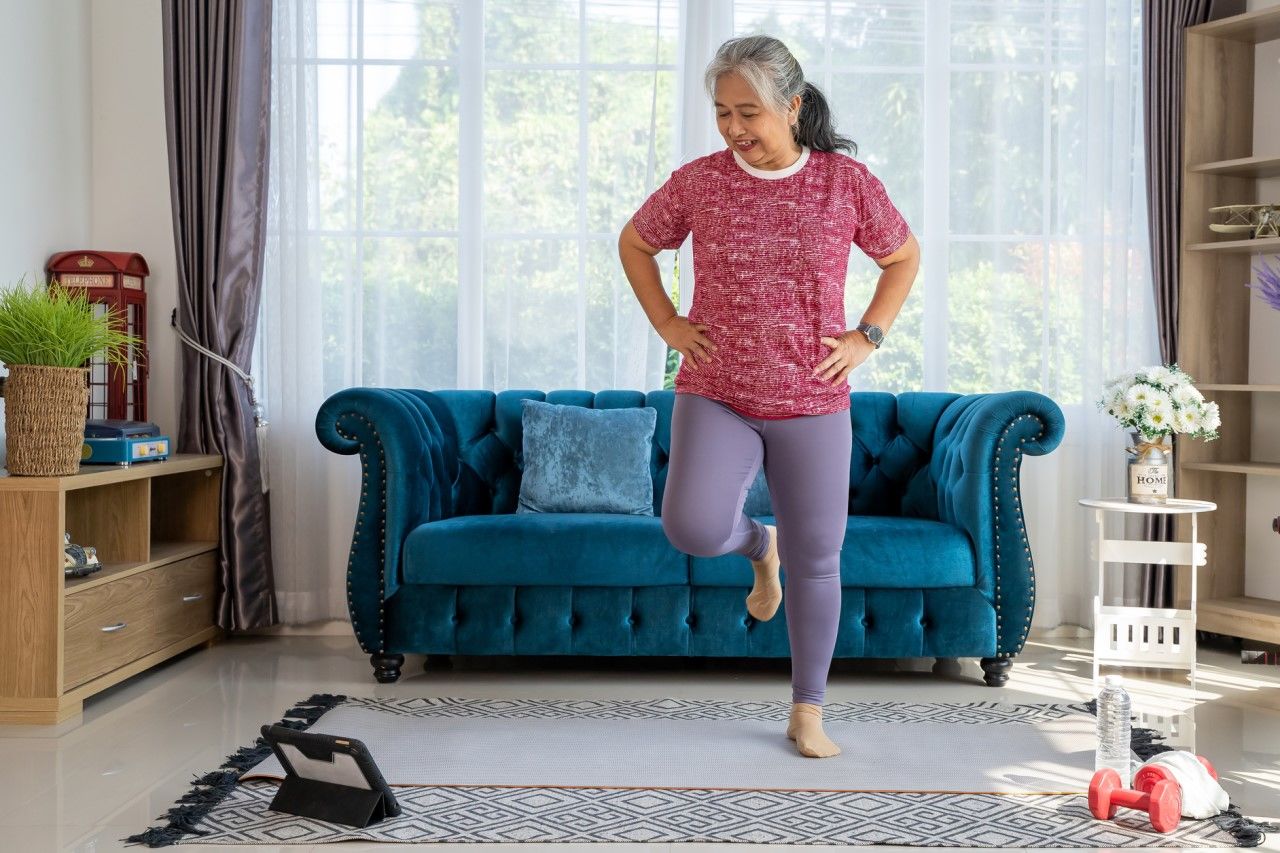Bite-sized exercise the key to improved health for seniors
Could 'exercise-snacking' encourage more seniors to discover the benefits of strength-training

Key Points
- Only 6 per cent of over 50s meet current guidelines for muscle resistance training
- Snacking is short bursts of regular exercises.
- Breaking down exercise into bite-size activities is more attractive to participants.
For those of us who want to be fit, but are turned off by the prospect of long and exhausting sessions at the gym, lifting weights, and pounding aerobics, this news could be life changing.
Researchers say short bursts of regular bodyweight at-home-strength-training is enough for people over 65 to maintain movement and enhance their quality of life. It’s called ‘exercise snacking’ - a routine of five different exercises such as:
- single-leg knee bends
- sit to stand, or
- single-leg quarter squats, all performed continuously for one minute, with a one-minute passive recovery break in-between.
The key to successful fitness is to perform the exercise routines at least once per day.
It’s well known that as we age, we lose skeletal muscle mass, strength, power, and functional capacity. In turn, that can affect independence and the risk of disease and mortality.
Dr Jackson Fyfe of Deakin University wants to break down the traditional barriers to fitness that older Australians face and instil long-lasting healthy habits that keep them mobile into the twilight years. “The benefits of exercise are well known, but despite this just 6 per cent of adults aged 50 and over meet the current guidelines for muscle resistance training,” Dr Fyfe said.
Researchers found that breaking down exercise routines to simple bite-size intervals of bodyweight movements that could be done at home meant it was more likely people would stick to their programs.
They gained confidence in doing new movements and felt it was having a positive impact on their health.
The research involved 38 men and women aged 65 to 80 who did not already perform regular structured resistance training. They were split into four groups:
- a control group that did not exercise
- a group that exercised for five minutes per day, and
- two groups that exercised for five minutes twice a day or three times a day for four weeks.
The researchers were surprised to discover a high rate of adherence among the exercise groups, with between 81 and 97 per cent of participants sticking to their routines.
Of the study participants, 82 per cent also flagged they planned to continue exercising once the study was over.
“Four weeks is not long enough to determine if there are physical benefits to exercise snacking sessions, but there are already plenty of related studies that show minimal-dose resistance training offsets the negative effects of ageing and improves mental health,” Dr Fyfe said.
“Australia has an ageing population and we wanted to show that exercise interventions to assist older people to maintain movement and improve their health and wellbeing do not need to be onerous. So, it’s never too late to start exercising and even small amounts of regular exercise can create positive results.
The full study, Feasibility and acceptability of a remotely delivered, home-based, pragmatic resistance ‘exercise snacking’ intervention in community-dwelling older adults: a pilot randomised controlled trial, published in the journal BMC Geriatrics, can be found here.







